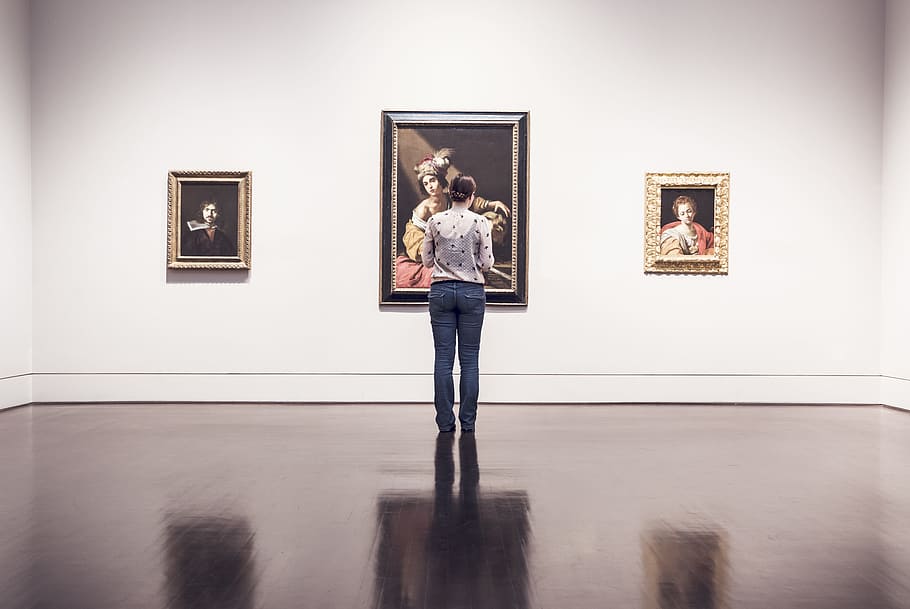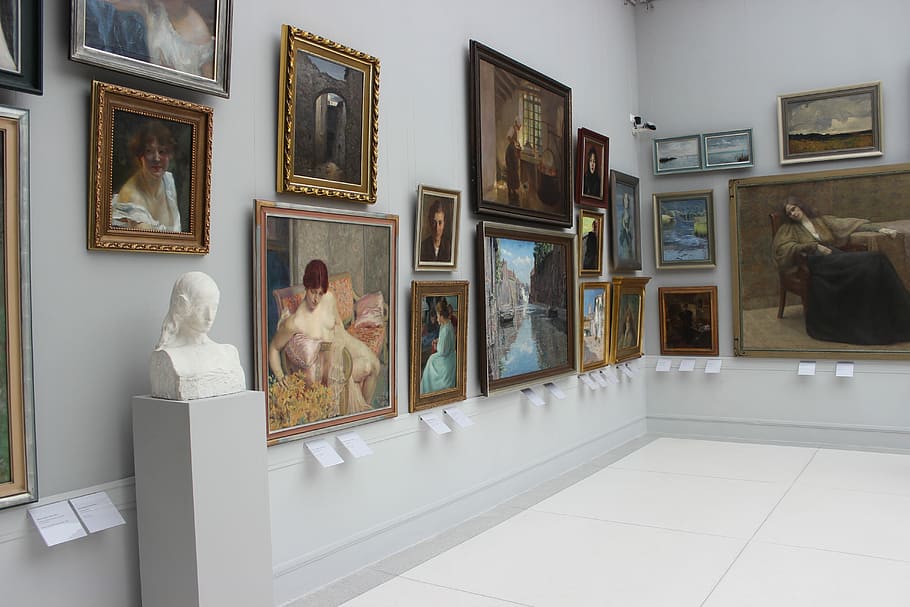設立・運営 2021.12.31
EM13 キャプティブの設立 No.13 (ケース・スタディ3:美術館の地震保険コストを大幅に削減)
目次
- 当コラム内の文章・画像等の無断転載・引用・複製を固く禁じます。
- A. 「リスクの強度が強く、発生確率が高い領域に所在するリスク」
- B. 「リスクの強度が強く、発生確率が低い領域に所在するリスク」
- C. 「リスクの強度が弱く、発生確率が高い領域に所在するリスク」
- D. 「リスクの強度が弱く、発生確率も低い領域に所在するリスク」
- 1.建物に対する地震保険
- 2.美術品に対する地震保険
- 3.美術品の保険引受(アンダーライティング)
- 4.美術品に対する地震保険キャプティブ
- 今回のまとめ
- It is strictly forbidden to publish, copy, quote or distribute the contents of this column without permission.
- A. “Risks that are located in areas of high risk intensity and high probability of occurrence”
- B. “Risks in areas of high risk intensity and low probability of occurrence”.
- C. “Risks located in areas of low risk intensity and high probability of occurrence”.
- D. “Risks in areas where the intensity of the risk is low and the probability of occurrence is low”.
- 1. Earthquake insurance for buildings
- 3. Underwriting of works of art (underwriting)
- 4. Earthquake insurance captives for works of art
- Summary of this issue
当コラム内の文章・画像等の無断転載・引用・複製を固く禁じます。
For those who prefer to read this column in English, the Japanese text is followed by a British English translation, so please scroll down to the bottom of the Japanese text.
リスクマネジメントは、企業・団体が内包する、また遭遇するリスクを「リスクの強度」と「頻度(発生確率)」から、4つのカテゴリーに区分けすることがその第一歩となる。縦軸にリスクの頻度(発生確率)、横軸にリスクの強度を取り、楕円形の大きさによってそのリスクの大きさを表すようにして、該当するカテゴリーにプロットしていく、このファーストステップの作業を「リスク・マッピング」と呼んでいる。
このリスク・マッピングでの最初の作業は、数多くのリスクを「対応の優先順位付け」等で、「10~20」に絞り込むことである。そして、次の4つのカテゴリーに分けてリスクマネジメント対応策を検討していくことになる。
A. 「リスクの強度が強く、発生確率が高い領域に所在するリスク」
このカテゴリーのリスクに対しては、リスクの「回避」をおこなう。「即座の対応」が求められるリスクであり、「強度を弱める」対応策をとるか、「発生確率を低減させる」対応策をとることが肝要だが、そのいずれも不可能な場合は「すぐさま該当業務、事業を廃止、中止すること」も検討する必要がある領域である。
B. 「リスクの強度が強く、発生確率が低い領域に所在するリスク」
このカテゴリーのリスクに対しては、リスクの「移転」をおこなう。この領域にあるリスクが顕在化した時にとるべき対応策は、「保険」を含めて「自社が蒙る損害の減少を目的とする各種対応策」を実行することが必要な領域である。「キャプティブにリスク移転することに最も適しているリスク区分」である。
C. 「リスクの強度が弱く、発生確率が高い領域に所在するリスク」
このカテゴリーのリスクに対しては、リスクの「軽減・低減」が必要であり、「リスクの制御」をおこなうべき領域である。個々の損害は小さいため、発生確率を減じるような対応策を講じることができれば、事業収益の向上に寄与することが期待できる領域でもある。
D. 「リスクの強度が弱く、発生確率も低い領域に所在するリスク」
このカテゴリーのリスクに対しては、特に対策はとらず、自社で「保有」する。リスクの「監視」をおこない、発生した場合のみ対応する領域である。ただし、「保有」の限界をどこに定めるかが重要である。このためには、列挙されたリスクに対してどこまで自社の財務諸表で対応できるか、その分岐点を決める「自己保有分析」が有効となる。
つまり、リスクへの対応策は、強度が強いリスクに対して、「回避」と「移転」が、強度の弱いリスクに対しては、「低減」と「保有」が適切な選択肢となる。
このように、リスクマネジメントに的確に取り組めばリスクの低下が起き、保険にも損害率の優良化という現象が起きる。そうなれば、保険を掛けることを「保険料の支出」という単なるコストにするのではなく、「事業収益に変えていこうとするリスクマネジメントの動き」が起きる。
そのリスクマネジメントを指して、グローバル・リンクは「Turning Risk to Profit®(リスクの収益化)」と定義した。リスク対応を単に「コスト」の次元に置くのではなく、「収益」へと変える発想と行動こそ、「企業戦略となり得るリスクマネジメント」と言えるからである。その具体例が、自社専用保険会社であるキャプティブの設立である。
このキャプティブの設立を最もおこなうべき保険としては、「リスクカテゴリーB: リスクの強度が強く、発生確率が低い領域に所在するリスク」に対応する保険が挙げられる。その一つが地震保険である。
発生したときは甚大な損害を被る可能性のある地震リスクであるが、「何時起きるのか誰も予測できないリスク」である。このため、南海トラフ大地震、首都圏直下大地震等への対応の必要性が叫ばれて久しいが、「何時起きるか解らない、また起きないかもしれない地震にそんな高い保険料は出せない」とばかりに、いまだに多くの企業で掛けられていない保険でもあり、また、実際に掛かる保険コストを大きく削減することができる点で、「リスクマネジメントを進めるキャプティブの設立の対象とすべき保険としては最適な保険」と言える。

1.建物に対する地震保険
地震保険の対象は、一般的には「企業・団体が所有する建物」および「建物に収容されている事業用の財物」であるが、美術品がその対象になることも実は多い。一枚の絵画に数億円、数十億円の価値があり、地震による被害は甚大になる可能性があるからである。
日本では、美術品も「一般的な火災保険」の対象となっているが、世界の保険市場では、「一般的な火災保険」とは完全に切り分けられ、「Fine Art(ファイン・アート)保険」という一分野を形成、リスクを引受ける保険会社も専門的な保険会社がほとんどである。
また、美術品に対する地震保険は、財物の価値、保管状況(=財物が収容される建物の所在地・建設年・構造、財物の展示・保管方法等)によって、アンダーライター(=保険会社から保険引受の権限を付与された専門職)のリスク判断が異なるため、総支払限度額の引受上限や保険料等の引受条件に大きな差が出てくる。したがって、選定する再保険会社によってキャプティブ収益の最大の源泉となる保険料の内外価格差(日本の保険会社の元受保険料率と再保険会社の再保険料率との差)が異なり、キャプティブの収益に大きな影響を及ぼすため再保険会社の選定はキャプティブ事業の成功にとっては非常に重要な要素となる。
2.美術品に対する地震保険
これまでグローバル・リンクが設立してきたキャプティブの多くは企業の建物及び建物に収容されている事業用の財物に関わる地震保険を対象とするものであったが、国内の美術館(以下「A美術館」)に展示・保管されている美術品を補償する地震保険をキャプティブ・プログラム化して、地震保険コストを大幅に削減した実例がある。
美術館の美術品等、これらの動産に対する保険は、保管中、輸送中を問わず、偶然な事故(火災、爆発、盗難、破損、濡れ損等)による保険の目的への物的損害を補償する「動産総合保険」がある。しかし、通常、動産総合保険には地震補償を付加することはできないため、財物に地震補償を掛ける場合には、保険の種類を換え他の火災保険、例えば「企業包括補償保険(企業総合保険)」等に、「地震危険担保」を特約として付保することになる。

3.美術品の保険引受(アンダーライティング)
美術品の価値を鑑定するためには「鑑定眼」と「豊富な鑑定の経験」を有している必要がある。このため、「保険に掛ける金額である保険金額を決定すること」もまた同様であるため、美術品に対して豊富な評価の経験を有している必要があり、非常に専門的な知識と経験が保険会社に求められることになる。
しかし、「専門家を育成するのではなく、保険全般に通じるジェネラリストを育成する人事制度」を有する日本のメガ損保では、そのような専門家が育ちにくいため、美術品の引受を自社単独でおこなうことは難しく、どうしてもロンドン・マーケットの美術品(Fine Art)引受専門の損害保険会社、専門の引受組織のアンダーライター(保険引受専門家)に引受判断を頼らざるを得ない。
美術品の保険価額の査定では、こういったアンダーライターは「世界的に信用がある」と認めた鑑定機関による鑑定結果を準用しているが、なかでもとりわけ重視しているのが、「美術品の展示・保管の場所とその方法」である。自社の持つ豊富なリスク・データから、美術品を収容する建物の所在地(=郵便番号単位で特定し、津波の影響を受けるか否かを含む)、建物構造、収容フロア(=地下か、地上階か)、保管・提示時の状況(=地震の揺れによる美術品破損への対策)等の情報を評価して保険引受をおこなっているのである。
4.美術品に対する地震保険キャプティブ
日本の損害保険では、「一物一価の原則」の履行が保険会社には長く求められ、「どこの保険会社でも保険料は同じ」であったが、「保険ビッグバン」と呼ばれた1996年の保険制度の大改革よりこの原則は大きく変化した。以降、保険会社のリスク判断に保険料の多寡の決定が委ねられるようになってきた。
しかし、実は「保険ビッグバン」以前でも、企業保険分野では保険料の決定には各保険会社のリスク判断が大きく働いていた。その理由として、企業保険分野では家計保険分野と異なり、リスクが巨大になる可能性があり世界の再保険市場から再保険のサポートを得る必要があり、世界の再保険市場の保険料水準によって元受保険料を決めなければならなかったからである。
なかでも、美術品(Fine Art)保険では、世界の保険会社、保険引受組織のアンダーライターによって提示される保険料が大きく異なるのが一般的である。キャプティブからの再保険(=日本の親会社からみると再々保険)を確保するため、複数の再保険会社に全く同じ情報を提供しても、各再保険会社のアンダーライターによってリスク判断に差があることや、またそのアンダーライターが権限付与されている美術品保険の引受キャパシティ(引受余力)の状況、更には美術品を収容する美術館が立地する地域の地震リスクの評価にも差があるため、各アンダーライターから提示される契約条件は大きく異なってくる。したがって、美術品保険を掛ける場合には世界の再保険市場であるロンドン・マーケットを如何に知悉しているかが重要になるのである。
グローバル・リンクがキャプティブ設立のコンサルティングをおこなったA美術館の場合でも、キャプティブからの再保険の見積もりを入手できた再保険会社は3社であったが、希望した総支払限度額を提示してきた再保険会社がある一方で、「その50%しか提示できない再保険会社」もあった。また、「他の再保険会社との共同引受を前提として自社では引受リスクの100%を引受けることはできない再保険会社」もあった。再保険料に至っては、3社間で10倍余の差が出ていたのである。このように、再保険会社によって引受条件に大幅な差が出ることがあるため、ロンドン・マーケットに関する知見は非常に重要である。
A美術館の場合、保険価額は300億円であったが、「免震構造、免震設備が充実している美術館」ということもあり、総支払限度額は50億円となった。その地震保険の元受保険料は2億円と元受保険会社であるメガ損保から提示された。キャプティブへの出再率(再保険に出す割合)は95%となり、キャプティブが引受ける再保険料(キャプティブの保険料収入)は1億9000万円となった。そして、ロンドン・マーケットの再保険会社から提示された「キャプティブからの再保険を引受ける再保険料」は、6000万円であった。キャプティブの運営費用1200万円及びロンドン・マーケットの再保険会社への再保険料(元受保険会社から見れば「再々保険料」)6000万円を支払った後、キャプティブに残った収益は1億1800万円となったのである。

今回のまとめ
美術品などの高額の財物の地震保険は、世界の再保険市場においては再保険会社によってリスク判断や保険料を含む提示される契約条件が大きく異なる。したがって、優位な契約条件を提示し、引受経験が豊かで保険金支払がスムースな再保険会社を探すことが重要である。
保険料の実質コストを大幅に削減するためには、日本の保険会社の元受保険料と海外の再保険会社の再保険料との「内外価格差」を活用することが効果的であり、海外の再保険市場から有利な保険条件を確保できる手段であるキャプティブの効用は大きいと言えるであろう。そのためには、キャプティブ設立・運営に関わる豊富な知見と実績、海外の再保険会社からの再保険手配に関わる深い知識・経験を有するコンサルティング会社のサポートが鍵になると言っても過言ではないだろう。
執筆 :菅原 伸雄 上田 修司 羽谷 信一郎
翻訳者:羽谷 信一郎
It is strictly forbidden to publish, copy, quote or distribute the contents of this column without permission.
English Translation
EM(Establishment・Management) 13 – Establishment of the Captive No.13 (Case study 3:Dramatic reduction in the cost of earthquake insurance for museums)
The first step in risk management is to divide the risks that a company or organisation contains or encounters into four categories, based on the intensity and frequency (probability of occurrence) of the risk. This first step is called “risk mapping”, in which the frequency (probability of occurrence) of a risk is plotted on the vertical axis and the intensity of the risk on the horizontal axis, with the size of the oval representing the magnitude of the risk.
The first step in this risk mapping process is to narrow down the number of risks to 10-20, e.g. by “prioritising responses”. We then consider risk management measures in the following four categories.
A. “Risks that are located in areas of high risk intensity and high probability of occurrence”
Risks in this category are to be “avoided”. It is essential to take measures to “weaken the intensity” or “reduce the probability of occurrence”, but if neither of these is possible, it is necessary to consider “immediately discontinuing the relevant business or operation”.
B. “Risks in areas of high risk intensity and low probability of occurrence”.
For risks in this category, the risk is “transferred”. When risks in this category materialise, it is necessary to implement various measures to reduce the losses incurred by the company, including “insurance”. This is the risk category that is best suited to captive risk transfer.
C. “Risks located in areas of low risk intensity and high probability of occurrence”.
This category of risk requires “mitigation and reduction” and is an area where “risk control” should be applied. As the individual damage is small, it is also an area where measures to reduce the probability of occurrence can contribute to improving business profits.
D. “Risks in areas where the intensity of the risk is low and the probability of occurrence is low”.
For this category of risk, no specific measures are taken and the company “owns” the risk. This is an area where we “monitor” the risk and only take action if it occurs. However, it is important to define the limits of “retention”. This can be achieved by a “retention analysis”, which determines the point at which the financial statements of the company can be used to cover the risks listed.
In other words, the appropriate options for dealing with risks are “avoidance” and “transfer” for the stronger risks, and “reduction” and “retention” for the weaker risks.
In this way, good risk management leads to a reduction in risk, which in turn leads to a better loss ratio for insurance. This will lead to a risk management movement that turns insurance into a business profit, rather than just a cost in the form of premium expenditure.
Global Link defines this as “Turning Risk to Profit®”, because it is the idea and action of turning risk into profit, rather than simply a cost, that makes risk management a viable corporate strategy. A concrete example of this is the establishment of a captive, a dedicated insurance company.
One of the most important types of insurance for which captives should be set up is insurance for “Risk Category B: Risks that are strong and located in areas with a low probability of occurrence”. One of these is earthquake insurance. An earthquake is a risk that can cause enormous damage when it occurs, but which no one can predict when it will happen.
The risk of earthquakes, which can cause enormous damage when they occur, is a risk that no one can predict when they will occur. For this reason, it has been a long time since the need to deal with a major earthquake such as the Nankai Trough or a major earthquake directly beneath the Tokyo metropolitan area was called for, but many companies still do not take out insurance because they cannot afford to pay such high premiums for an earthquake that may or may not happen. The fact that the cost of insurance can be significantly reduced makes it the most suitable insurance to establish a captive for risk management purposes.
1. Earthquake insurance for buildings
In general, earthquake insurance covers buildings owned by companies and organisations, as well as business property housed in buildings. This is because a single painting can be worth hundreds of millions or even billions of yen, and the damage caused by an earthquake can be devastating.
In Japan, works of art are covered by “general fire insurance”, but in the global insurance market, they are completely separated from “general fire insurance” and are covered by “Fine Art Insurance”.
In the case of earthquake insurance for works of art, underwriters (professionals authorized by the insurance company to underwrite the insurance) make different risk judgments depending on the value of the property and the storage conditions (location, year of construction, structure of the building in which the property is housed, method of display and storage of the property, etc.). Therefore, underwriting conditions such as maximum aggregate payout limits and premiums can vary significantly. Therefore, the choice of reinsurer is critical to the success of the captive business as the difference between the domestic and international premium rates (the difference between the primary premium rates of Japanese insurance companies and the reinsurance rates of reinsurance companies), which is the largest source of captive income, varies depending on the reinsurer selected. Reinsurance company selection is a critical factor in the success of a captive.
2. earthquake insurance for works of art
While most of the captives that Global Link has established to date cover earthquake insurance on corporate buildings and business property housed in those buildings, there is one example of a captive programme that has significantly reduced the cost of earthquake insurance by providing coverage for movable works of art on display and in storage at a museum in Japan (“Museum A”).
The insurance for these movable assets, such as art works in museums, is “comprehensive movable insurance”, which covers physical damage to the insured object due to accidental damage (fire, explosion, theft, breakage, wetting, etc.), whether in storage or in transit. Normally, however, earthquake coverage cannot be added to comprehensive movable insurance, so if you want to add earthquake coverage to your property, you will have to change the type of insurance to another type of fire insurance, such as comprehensive corporate insurance, and add “earthquake risk coverage” as a special clause.
3. Underwriting of works of art (underwriting)
In order to appraise the value of a work of art, it is necessary to have an “appraising eye” and “extensive appraisal experience”. Therefore, the same applies to “determining the insurance amount, which is the amount of money to be insured”. Therefore, it is necessary to have a wealth of experience in appraising art works, and insurance companies are required to have very specialized knowledge and experience.
However, it is difficult for Japanese non-life insurers to underwrite fine art on their own, because they have a personnel system that trains generalists in all aspects of insurance, rather than training specialists. They are forced to rely on underwriters at non-life insurance companies and underwriting organisations specialising in Fine Art in the London market to make underwriting decisions.
In assessing the insured value of fine art, these underwriters use, mutatis mutandis, the results of appraisals by appraisers recognised as being of “international repute”, with particular emphasis on the “location and manner of storage of the art”. Based on its own extensive risk data, the company evaluates the location of the building in which art works are stored (identified by postcode, including whether it is affected by tsunamis), the structure of the building, the floor on which the art works are stored (underground or above ground), and the conditions under which the art works are stored and presented (measures to prevent them from being damaged by earthquakes).
4. Earthquake insurance captives for works of art
In the Japanese non-life insurance industry, insurance companies have long been required to implement the “principle of one price for one product” and “premiums are the same for all insurance companies”, but this principle has changed drastically since the major reform of the insurance system in 1996, known as the “Insurance Big Bang”. Since then, the decision to charge more or less for insurance has been left to the risk judgment of the insurance company.
However, in fact, even before the “Insurance Big Bang”, the decision on premiums in the corporate insurance sector was largely based on the risk judgment of individual insurers. The reason for this was that, unlike the household insurance sector, the corporate insurance sector had to obtain reinsurance support from the global reinsurance market due to the potentially huge risks involved, and had to determine its primary premiums according to the level of premiums in the global reinsurance market.
In Fine Art insurance, in particular, it is common for the premiums quoted to vary widely between underwriters from different insurers and underwriting organisations around the world. In order to secure reinsurance from a captive (i.e., retrocession from a parent company in Japan), even if the exact same information is provided to multiple reinsurers, the underwriters of each reinsurer may differ in their assessment of risk, as well as in their underwriting capacity for fine art insurance. The terms and conditions offered by each underwriter can vary significantly due to differences in risk judgement, the underwriting capacity of the underwriters, and the assessment of the seismic risk of the region in which the museum houses the artworks. Therefore, it is important for art insurers to have a good understanding of the London market, the world’s leading reinsurance market.
In the case of Museum A, where Global Link consulted on the establishment of a captive, we were able to obtain reinsurance quotes from three reinsurers. One reinsurer offered the total limit requested, while another “could only offer 50% of that amount”. There were also reinsurers that were unable to underwrite 100% of the risk on their own on the basis of joint underwriting with other reinsurers. Reinsurance premiums differed by a factor of more than 10 between the three companies. This is why knowledge of the London market is so important, as underwriting conditions can vary significantly between reinsurers.
In the case of Museum A, the insured value was 30 billion yen, but the total limit of payment was 5 billion yen, partly because the museum has a “well-developed seismic isolation structure and equipment”. The primary premium for the earthquake insurance was ¥200 million. The reinsurance ceded to the captive was 95% and the reinsurance premium underwritten by the captive (the captive’s premium income) was 190 million yen. The London Market reinsurer’s offer for the “reinsurance premium to be underwritten by the captive” was ¥60 million. After paying the captive’s operating costs of approximately ¥12 million and the London Market reinsurer’s reinsurance premium of ¥60 million, the captive was left with a profit of ¥118 million.
Summary of this issue
In the global reinsurance market for earthquake insurance of high value property, such as works of art, the risk assessment and the terms and conditions offered, including premiums, vary greatly between reinsurers. It is therefore important to find a reinsurer that offers favourable terms and conditions, has good underwriting experience and smooth claims payments.
In order to substantially reduce the real cost of premiums, it would be effective to take advantage of the “internal/external price differential” between the premiums paid by Japanese insurers and those paid by overseas reinsurers, and captives can be an effective means of securing favourable insurance terms from overseas reinsurance markets. In order to achieve this, it would not be an exaggeration to say that the support of a consulting firm with a wealth of knowledge and experience in the establishment and operation of captives and in arranging reinsurance from overseas reinsurers is key.
Author:Nobuo Sugawara Syuji Ueda Shinichiro Hatani
translator: Shinichiro Hatani

